Creating a Custom Form
- Videos
- Creating custom forms
- Types of form elements
- Countersigning or adding a therapist signature to a consent form
- Frequently asked questions
Videos
Custom Forms
This Sessions Health tutorial teaches you how to use system forms and create your own custom forms.
Creating custom forms
Your Sessions Health account gives you the ability to add as many custom forms as you need. You can build forms from scratch or start with a System Form to get started quicker. To customize a form, go to Forms & Documents > My Forms.
Choosing the type of form to customize
- Consent forms can be customized with text only and a signature is always prompted. Consent forms can be shared when inviting clients to the portal.
- Screenings and assessments can be customized with any type of element (drop-down, multiple choice, text, etc.) except the signature element. Signatures are always prompted when you share with a client. Screenings and assessments are displayed as options to use in Clients > [Client Name] > Assessments and are not shared when inviting clients to the portal, however, you may clone these to the Intake section where they can be shared when inviting clients to the portal. Learn more about sharing assessment here: Sharing assessments.
- Intake forms can be customized with any type of element and shared when inviting clients to the portal.
- Notes (or progress notes) can be customized with any type of element except the signature element. DAP Note and SOAP Note templates are available under System Forms. When writing a note for a session, the different note templates you create will be available as drop-down options in the Notes tab of your session.
- Questionnaires can be customized with any type of element. These can be sent when clicking on the form and going to the Submissions tab or can be sent as a session bridge between appointments.
- Treatment Plans can be customized with or without the integrated treatment plan goals. Using this will allow you to configure goals, objectives, and interventions using the integrated built-in tools, allowing you to update your treatment plan progress into your progress notes. Once a custom form is built, it'll be listed as an option when starting a new treatment plan in a client's Diagnosis & Treatment tab.
Note: Only account members with Administrator access can add or edit forms.
Customizing the form
To start, click the + Add button next to the type of form you wish to create. Give your form a name and click Save.
Once you save your form, you will be at a screen where you can add form elements to your form. A form element is just an HTML input type that you can give a custom label, instructions, and a required designation.
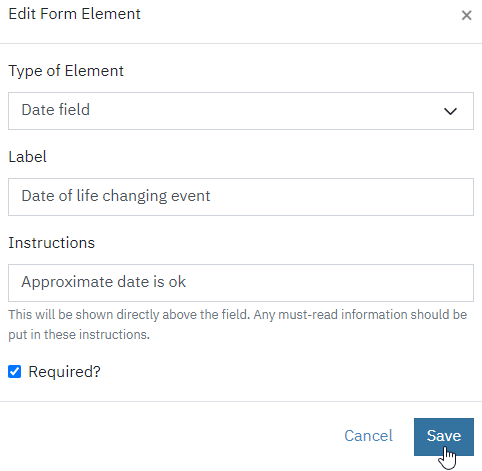
Editing elements within a form
After adding an element, you can edit by clicking on the "..." to the right of the element and choosing Edit. You can rearrange your elements by simply dragging and dropping above or below other elements.

Previewing a form and other options
When creating a new form, you can preview how your form will look by clicking on the "..." to the right of the form name and selecting Preview.

Other options include:
- Edit Settings - From here, you can change your form's name, and in the case of an Intake form, you change whether or not it is automatically assigned to new clients. In the case of a questionnaire, you can choose whether your form can be used for session bridging.
- Print - Creates a PDF version for you to save or print.
- Clone - Allows you to create a copy of the form, which may also be saved as a different type of form (ex. an assessment can be saved as an intake form).
- Archive - this will hide the form and be unavailable for use. An Archived folder will be created at the bottom of the form section where you can go in and unarchive your form.

- Permanently Remove - Will delete the form from your application.
Moving a form to another section
You may clone an existing form and save it to another section. For instance, you may want to include an assessment as an intake form for the client to fill or include as a note template for the initial session. To do this, click into an existing form in Forms & Documents > My Forms. Click the "..." next to the form name and select Clone. Select the form Type in the drop-down you wish to clone it to and click the Clone button.
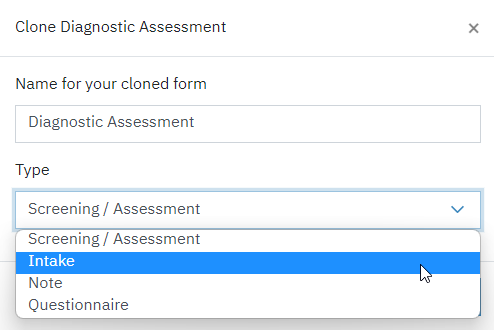
Types of form elements
Standard Text Input - This type of element allows people to enter a text response. Examples include: first name, last name, etc. If multiline is selected, multiple lines of text may be entered.

Multiline Standard Text Input - Same as a Standard Text Input but spans multiple lines.
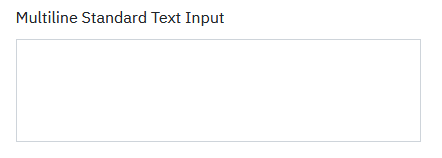
Date Field - Captures a date.
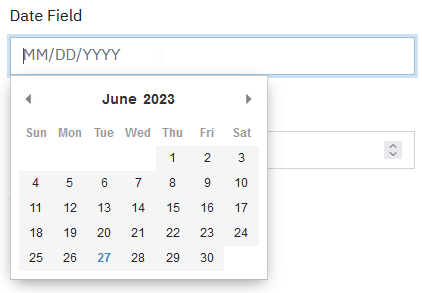
Yes/No Answer - Captures a Yes or No response.

Numeric Field - Will only accept numeric values such as an age.

Single Choice - Can select one response out of many displayed using radio buttons.

Multiple Choice - Can select multiple options out of many displayed using checkboxes.

Dropdown - Can select one option from a dropdown list of options.

Likert Scale - Maps labels to ordinal values.

Range Slider - Can select a value from a range of options.

File upload - Can upload a file such as a photo of a government-issued ID or insurance card.

Electronic Signature - You can require an electronic signature on Intake forms.

Field Group - A collection of elements that can filled out multiple times on a form.
The field group definition will prompt you to give the grouping a name, description and limits on how many times the repeatable field group must be completed. Leaving the maximum blank allows it to be filled out an unlimited number of times.
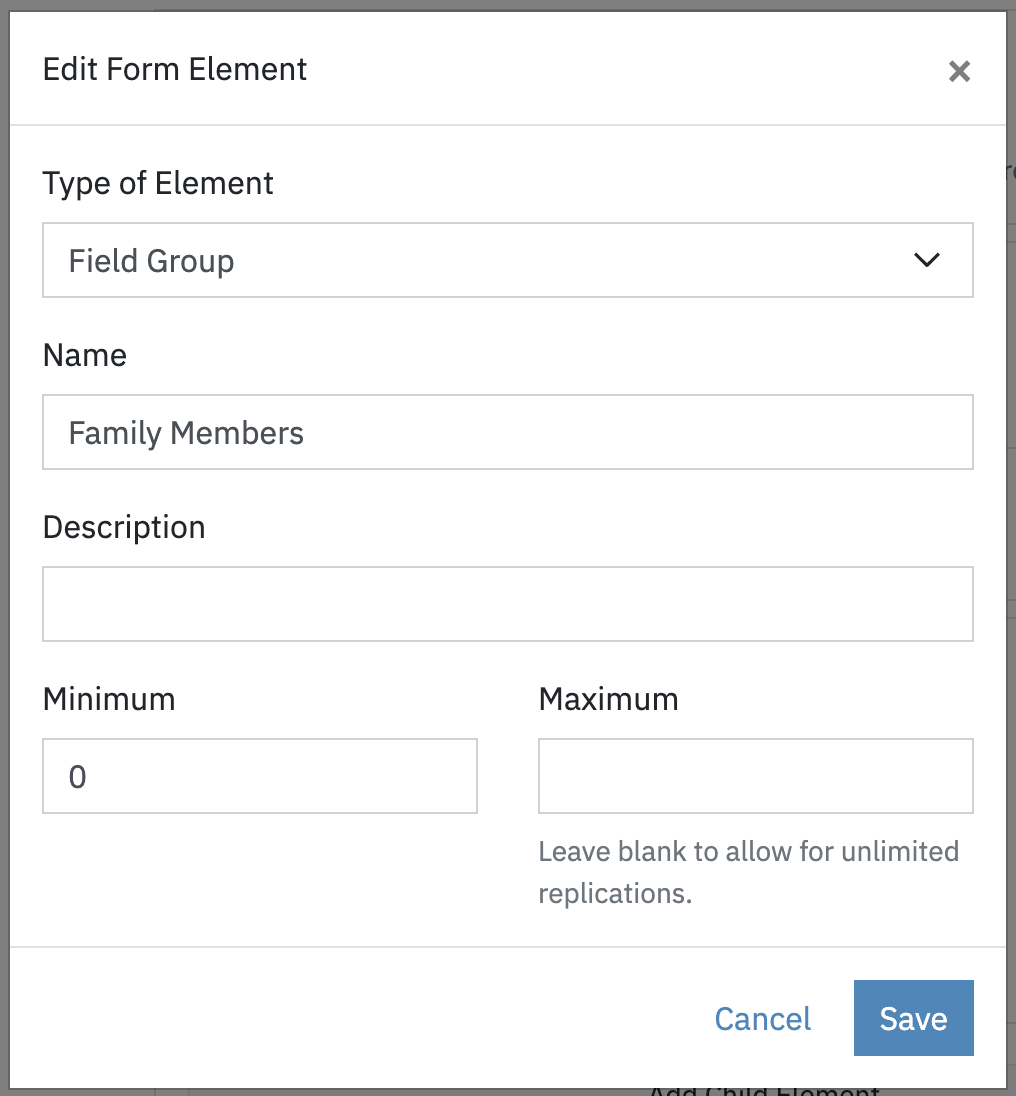
Once the definition has been created, you can add the relevant elements that should be included in the grouping.

When the client is presented with a field group, they can fill it out multiple times. Entering multiple contacts is one example for a use of the Field Group element.

Section header - Used for creating a header for a section of the form.
Divider - Used to visually divide sections of a form.
Rich content - Used for displaying and formatting text.

Countersigning or adding a therapist signature to a consent form
Some states require both a client and therapist signature on forms. To get started, go to Forms & Documents > Forms > My Forms. Click on the form you wish to add countersigning to. In the upper-right corner, click on the '...' to select the Edit Settings option. From the setting popup, you can select the Require Countersignature option.
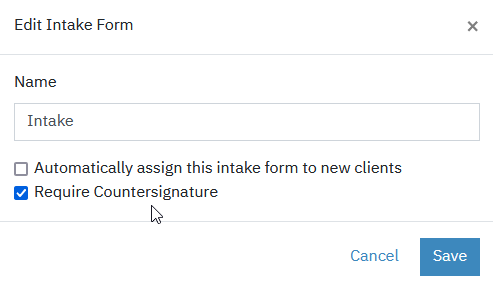
When a form has been completed by a client and requires clinician signature, a notice will appear on the Home screen.

FAQ
Can I rearrange the order of my questions and choices on custom forms, etc.?
Yes! All of our custom forms are drag-and-drop. You can also reorder all of your forms under My Forms using drag and drop to set your preferred order.

If my client partially fills out a form, can they resume it later?
Yes, the values entered are automatically saved in real-time so nothing will be lost if a client clicks out of the form.
Why can't my client click the Save button at the end of a form?
Please be sure your client fills out every Required field. A required field is denoted with an asterisk.
How do I share a form with a client?
Please see our articles on sharing assessments and basics of using the client portal.
